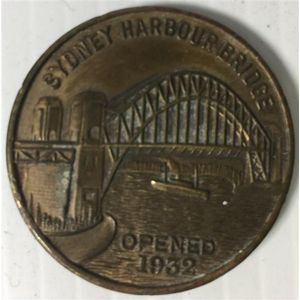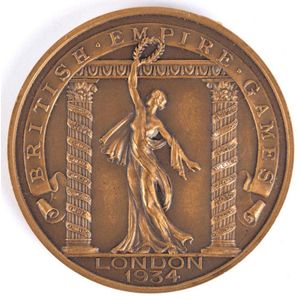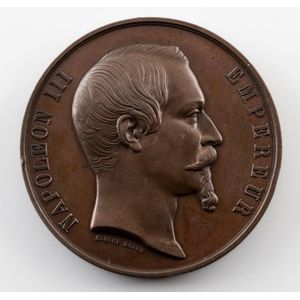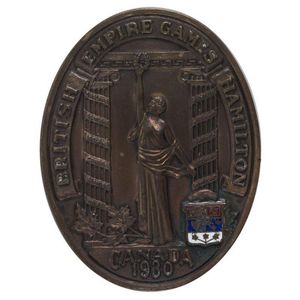Gold Medalist Harry Mizler at 1930 British Empire Games
You must be a subscriber, and be logged in to view price and dealer details.
Subscribe Now to view actual auction price for this item
When you subscribe, you have the option of setting the currency in which to display prices to $Au, $US, $NZ or Stg.
- Federation Period - The Federation style in architecture and furniture is broadly the Australian equivalent of the English Edwardian period and extended from 1890 to 1915. The name relates to Australia becoming a Federation in 1901, when the colonies became the Commonwealth of Australia.
- Bronze - An alloy of copper and tin, traditionally in the proportions of about 9 parts of copper to 1 part of tin.
The discovery of bronze in Western Asia in the 4th century enabled people to create metal objects which were superior to those previoulsy possible because of its strength and hardness, and it has been used throughout the world for weapons, coins, tools, statuary and other decorative items.
It is very fluid in a molten state, and its hardness, strength when set, and non-corrosive properties makes it most suitable for casting sculpture.
This item has been included into following indexes:
Visually similar items

A bronze 1950 Empire Games competitor's medal, maker's mark 'G.W.'.

A 1932/3 Marcus Clark & Co. Ltd Sydney Harbour Bridge commemorative medal, cast bronze, diameter 39 mm

1934 2nd British Empire Games in London, Participation Medal 'British Empire Games/London/1934', bronze, 44 mm diameter, in original presentation case. Australia came 3rd in the medal tally at the London Games with 8 Gold, 4 Silver & 2 Bronze. The gold med

Emperor Napoleon III copper medal by Barre; 60 mm; 115 grams. Coats of Arms on reverse. (2 examples).
